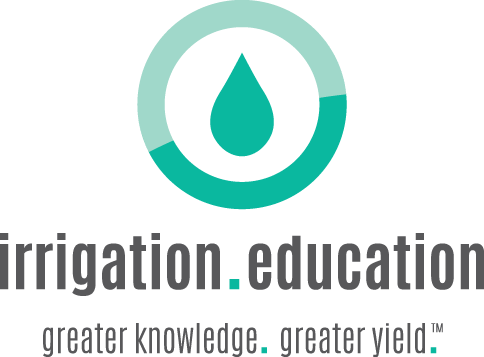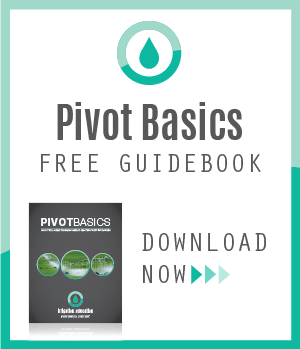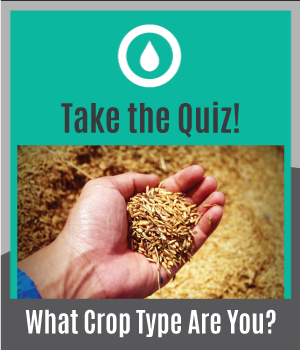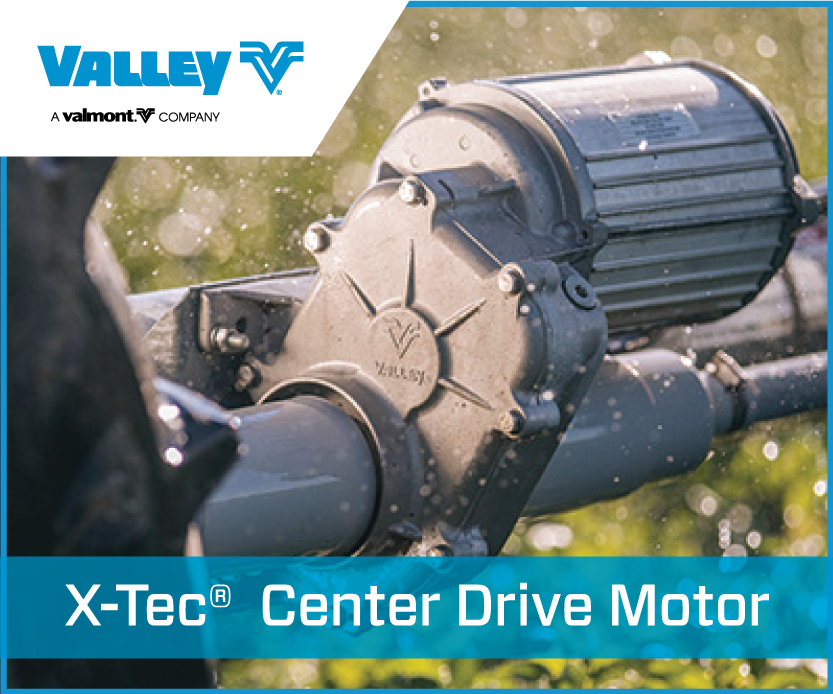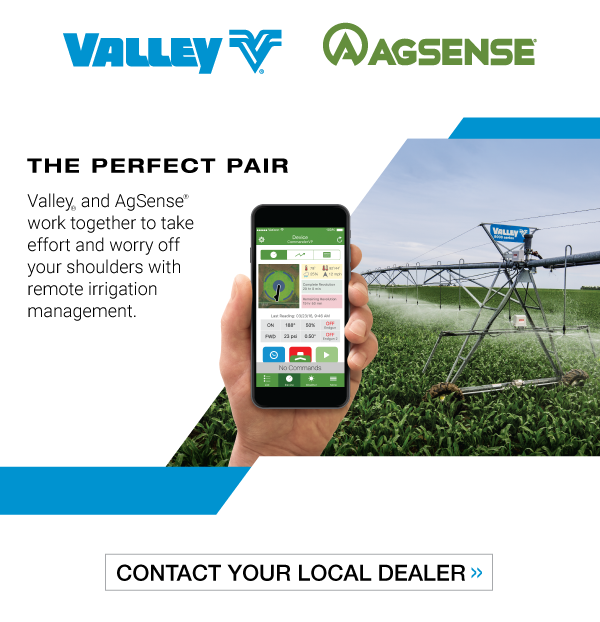Starting the process of switching from dryland to irrigated farming can seem like a daunting task. There’s a lot to consider and factors that make initial investment costs not so cut and dry for every field. Patrick Scates, General Manager at Scates Valley Inc., a Valley® Irrigation dealership in Carmi, IL, talked us through who to talk to, what you should know, and what to expect when it comes to making an investment in center pivot irrigation.
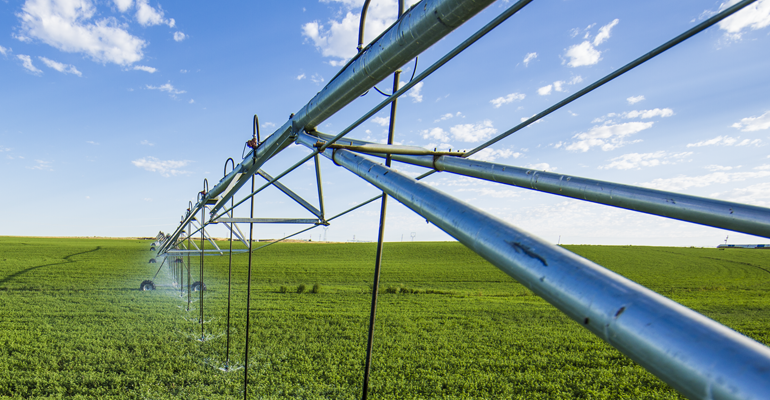
1. Who are the top three people you need to talk to before you can begin transforming a field from dryland to irrigated?
First, a grower should meet with a local irrigation dealer to discuss options and cost. They should then talk with the landowner to discuss the advantages of irrigation. Thirdly, they need to sit down with their accountant/financial institution to discuss best options when it comes to payments, cash, lease, loan options etc.
2. What is one thing most first-time irrigators forget to think about when it comes to transitioning from dryland to irrigated?
There are two things customers seem to forget about when discussing irrigation: water source availability and power source. As much as we all wish water was plentiful under every acre of farmland, it’s not. Sometimes deep wells or even multiple wells have to be drilled to have adequate water for irrigation. When wells are not an option, using rivers, streams, or ponds can be used.
When it comes to power source, growers need to think about how close electricity is to the field and how willing the electric company will be in working with them to get adequate power to the field. If electricity isn’t an option, units that run on diesel, propane, or natural gas can be an alternate solution.
3. What is usually the biggest shock to a new irrigator in terms of cost?
The cost of power is usually the biggest shock to a new irrigator. The grower will get his first electric/fuel bill once he has started irrigating and will probably have sticker shock. It won’t be until harvest that they will see their investment has increased their yields. At this point, the power cost is well worth it.
4. What are the 3 items associated with putting in a new pivot that cost the most?
When we first talk with a grower about adding irrigation to their farm, I like to first discuss the three most costly items that comes with adding irrigation. Obviously the actual pivot is one of the major items and most growers realize that. Next would be the well drilling/water source. The cost of well drilling can vary in different parts of the country but is definitely the most economical way to get water in most cases. Pulling water out of rivers and streams or building ponds is another way to get water, but that comes with a little more added cost. Power source is the next item that we remind growers to take into account. If electricity is your power source, you will have the cost of buried wire to the pivot. Obviously the longer the run from pole to pivot, the more costly it will be. Also, depending on your power company, there might be a fee to hook onto public power. When electricity is not available, a power unit with a generator will need to be purchased to power your pump and pivot.
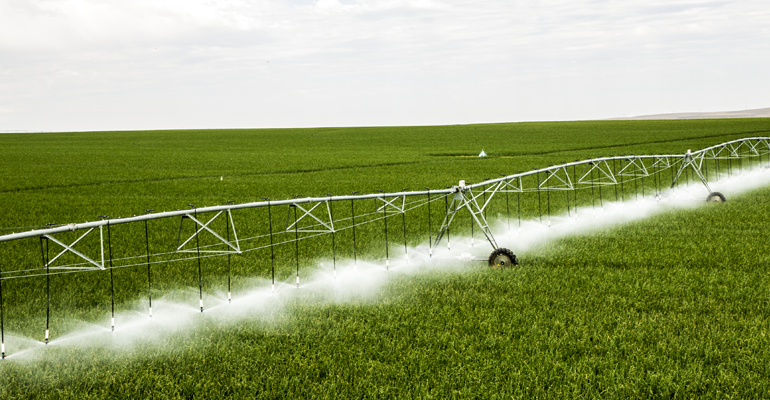
5. What is the one item you suggest spending a little more money on up-front that will save you the most in the long run?
Pivots are a lot like cars and trucks, there are a lot of different options that a grower can add, you just have to find out what best suits their needs. Two items that we always tell growers to never skimp on are tires and sprinklers. For the most part, in our region it pays off and is better in the long run to have larger tires. Growers reduce compaction and have less down time due to pivots getting hung up by going with larger tires. Another item we always tell growers to spend a little more money on at the beginning is the sprinkler package. There are many different options with sprinklers, but in our area Nelson rotators and accelerators seem to get the best coverage. Also, spending the money to have regulators on your pivot will have add cost savings throughout the life of the sprinklers.
6. What are the first questions you ask any customer new to irrigating when they come into your dealership?
First time growers have a number of questions about the cost of irrigating when they first come into the office, but sometimes to answer those question we need to ask the grower a few questions. The first question we ask is: What is your water availability? Is it well, river, stream or pond? This helps us determine other costs to consider like wire and underground pipes and fittings that will be needed if the water source isn’t close. The next question is: How close is power and is it three phase or single phase? This gives us an idea if we will need a VFD or phase converter for single phase. We always ask what type of soil the field is and what type of crop they will be raising under the pivot. This will give us an idea of what kind of tires we should recommend and what kind of gallons per minute (GPM) the pivot will need. It also gives us an idea of what kind of sprinkler set-up the grower will need. Another question that goes along with helping determine GPM is asking if the pivot will be able to do a full circle or will it be doing a windshield wipe.
7. What are the main things that a customer interested in irrigating should know about their land/situation before contacting a dealership?
If the grower doesn’t own the land they first need to find out if the land owner is interested in putting irrigation on the property. The tenet/owner should also decide if other land improvements need to be made before adding irrigation i.e. clearing trees, ditching, tile etc. This can significantly change timeframes and installation dates.
They should also consider whether their soil can benefit from irrigation. When assessing for possible irrigation, a grower should know the sandier soils will benefit more with irrigation as opposed to the darker soils that hold moisture well. That being said, during a drought all soils can benefit from irrigation. I tell growers, irrigation machines are a lot like insurance. Some years you need it and some years you won’t, but more often than not it’s a benefit to your field.
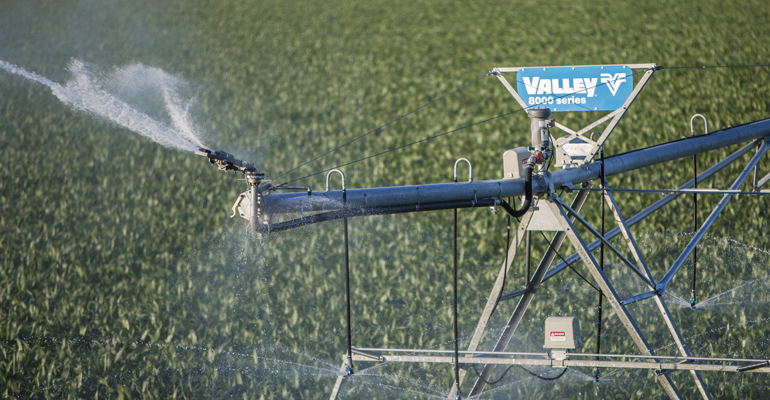
8. Is center pivot irrigation the solution for every field?
No. As much as we would like to put a Valley irrigation machine on every acre of farmland, it sometimes doesn’t make sense. There are fields that are misshapen, there are fields that don’t drain well and hold too much water already. At the end of the day, the pivot has to pay for itself and some fields don’t allow that to happen with a center pivot.
9. What are the best ways to avoid high input costs year after year on a center pivot?
We tell our growers that irrigation pivots are the number one most abused piece of equipment on the farm. It’s easy to neglect them because when the watering season is finished, you shut it off and that’s it. You don’t bring it to the shop like you do a planter, disk, or combine. It’s not staring at you from the yard all fall and winter reminding you to do maintenance on it, so we encourage our growers to do a fall maintenance program on all their pivots. This allows us to inspect their pivots for any problems and also allows us to do any yearly maintenance on the pivot that should be completed. The growers that participate in the fall maintenance program have far fewer service calls during the growing season.
10. What do you tell customers when they ask you about the overall return on investment of a center pivot?
Return on investment for a pivot can vary from region to region and also depending on crop. For our region we tell growers the average pivot pays for itself in seven years. We have never had a grower tell us that it was a bad investment to put a Valley pivot on their field.
-
A Special Thanks To:

- Patrick Scates
- General Manager
- Scates Valley Inc. in Carmi, IL
- Learn More
-
Modern irrigation techniques are continually evolving. Take your time, do your research, and ask irrigation professionals for help if you need it.
Log into the training center to learn more about irrigation best practices, technology, and new products that will help you beat last year's yield.
-
-
-
-
Share your thoughts, comment below!
-

